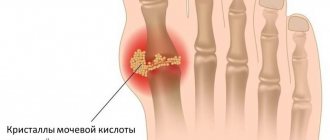Atopic dermatitis (AD) in children is one of the most common diseases of young children. This disease is an allergic inflammation of the skin, which is characterized by itching, as well as frequent relapses and age-related characteristics of the skin rash. As a rule, dermatitis appears at an early age; if left untreated, it continues to progress into older age, which significantly worsens the quality of life of patients and their families.
For the development of this pathology, a hereditary predisposition to the development of allergies is of great importance. Therefore, this disease is often combined with other forms of allergies, for example, bronchial asthma, allergic conjunctivitis and rhinitis, food allergies. There is such a thing as “atopic march” . Atopic march is a natural progression of allergic diseases. As a rule, it all starts with a food allergy, which often gives impetus to the development of atopic dermatitis. In the absence of adequate treatment, the march progresses. Over time, the child develops allergic rhinitis. Over time, a more dangerous, in some cases, life-threatening condition arises - bronchial asthma.
Prevalence of atopic dermatitis in children
It is safe to say that this disease can occur in any country, in both males and females. Dermatitis occurs in different age categories. The prevalence of AD is higher in residents of economically developed countries, which may be due to the urban lifestyle of this population. According to the protocol for the treatment of AD in children, the prevalence of this pathology in the Russian Federation ranges from 6 to 15% according to ISSAC. ISAAC is a standardized epidemiological study - the International Study of Asthma and Allergy in Childhood. Repeated studies within the framework of this program show a significant increase in the prevalence of AD in children of the Russian Federation.
Research shows a significant increase in the prevalence of atopic dermatitis in children in the Russian Federation.
Also, the expert committee on asthma and allergy of the WHO European Bureau developed and approved another program - GA2LEN. GA2LEN (Global Allergy and Asthma European Network) studied the incidence of allergic pathology among adolescents aged 15 to 18 years. According to the study, the presence of symptoms of AD occurred in 33% of adolescents, the prevalence of AD according to questionnaires was 10%, and a confirmed diagnosis was found in 7% of adolescents. Girls have 1.5 times more than boys.
Contact dermatitis - symptoms and treatment
Symptoms of simple contact dermatitis:
- soreness;
- redness;
- burning;
- edema;
- itching (less pronounced).
Sometimes blisters with clear serous fluid appear, which can burst. As a result, weeping occurs in the area of dermatitis - fluid separation. If an infection is added to the irritation, pustules appear.
Symptoms of allergic contact dermatitis:
- severe itching;
- edema;
- redness;
- blisters with serous fluid, which then dry out and form scales and crusts;
- pain as a result of scratching and secondary infection.
When dermatitis becomes chronic, peeling and thickening of the skin may occur in areas of inflammation [3]. If the patient does not begin treatment in a timely manner, the disease progresses, and allergens appear - rashes on other parts of the body, far from the primary focus.
Dermatitis can affect various areas of the body: scalp, face, eyelids, mouth, lips, neck, hands, feet, limbs.
Scalp
On the scalp, dermatitis develops with increased sensitivity to certain metals, in particular nickel. Products made from it (for example, curlers, hair straighteners) can cause redness and itching. Hair washing products can lead to the development of “washing dermatitis”, which appears as strip-like lesions on the face and neck. Other causes of dermatitis are accessories with rubber or leather parts: hat band, cap lining, wig patch [5].
Face
Dermatitis can be caused by the use of cosmetics: moisturizers and sunscreens, hair care products, perfumes. Mobile phone use can cause dermatitis in the form of a unilateral rash on the cheek [6][7].
Eyelids
Sensitivity of the skin in the eyelid area often causes the appearance of dermatitis in this area. Dermatitis can be caused by the prescription of eye drops and the use of objects containing rubber, such as swimming goggles and microscope eyepieces. [8]. If you rub your eyes with your hands, “accidental” allergens can get on your eyelids.
Mouth, lips
The causes of damage to the oral cavity are dentures, crowns, and hygiene products. Nickel, cobalt, mercury, and gold are used to make dentures. These substances can cause burning and tingling sensations in the mouth [8][9]. An allergic reaction occurs to chemicals, flavorings contained in toothpastes and other oral care products. Sodium lauryl sulfate, which is part of toothpastes, often causes irritation.
Lip dermatitis is associated with the application of lipstick, which contains dyes, flavors, and preservatives. Another cause of lip dermatitis is the habit of putting metal objects in the mouth, in particular pens and pencils. Chronic dermatitis in the form of a plaque on the lower lip can develop in musicians who play wind instruments.
Neck
The use of cologne and perfume leads to rashes on the front surface of the neck. Photoallergic dermatitis of the face and neck can be caused by sunscreen agents. A rash in the form of a strip around the neck appears from contact with the collar of a shirt or coat if the allergen is part of paints and resins. Allergic dermatitis develops from contact with metal, which is part of jewelry - chains, necklaces. The lesion will correspond to the location of the decoration [13][14].
Hands, feet, limbs
Dermatitis can develop through daily contact with water, detergents, and the use of rubber gloves. There is palmar grip dermatitis, which affects the central part of the palm in contact with the allergen. The causes of such dermatitis are a mobile phone, a gear shift in a car, gripping a cane and other objects [2].
Hairdressers experience rashes due to the use of shampoos, hair dyes, and nickel-plated scissors [15]. If the periungual ridges on the fingers become inflamed, exposure to formaldehyde resin or acrylate in nail polish and artificial nails can be suspected.
Typical allergens that cause foot dermatitis are rubber vulcanizers in rubber, tanning agents, rosin, chromates, such as potassium biochromate in leather [16][17].
The upper and lower extremities are exposed to irritants and allergens [2]. Dermatitis is localized on the wrists, thighs, and calf muscles.
Torso
Dermatitis of the trunk is common, but it is not always possible to determine the source of the allergens. Rash on the abdomen and back occurs when wearing belts with buckles and bras with clasps containing nickel. Nickel can cause dermatitis on the left side of the chest if a man carries a lighter or other item containing this metal in his chest pocket.
In the armpits, dermatitis appears when using deodorants that contain fragrances, essential oils, propylene glycol, and parabens.
Clothing can be a source of allergens. Rashes occur during intense sweating and are located in areas of friction between the skin and clothing. The causes of contact dermatitis are both the fabric itself and the dyes used in its production [20]. In recent years, it has been associated with dimethyl fumarate. The substance is used as a biocide to prevent the growth of mold and is found in fabrics covering sofas [21]. This type of dermatitis is severe and affects the back, buttocks, and lower limbs.
Treatment of atopic dermatitis in children
In this article, we will pay great attention to the treatment of this disease, and will also talk about the main features of the use of medications in children with atopic dermatitis.
The basis of treatment is external therapy using various medications. The goal of external (local) therapy is the complete elimination of inflammatory changes, itching, as well as restoration of the water-lipid layer of the skin. Local glucocorticosteroids (hormones), calcineurin inhibitors, and emollients are used as such agents. We will pay special attention to emollients. Emollients are medicinal cosmetics that care for the skin and prevent dry skin. In some cases, systemic therapy is also prescribed. Systemic therapy refers to the use of drugs that are administered orally. Antihistamines are most often used as systemic therapy.
Below we consider the most common drugs for the treatment of blood pressure in children.
The goal of local therapy for atopic dermatitis is the complete elimination of inflammatory changes and itching.
Hormones
Local glucocorticosteroids (MGS) are used as hormones. They are the most powerful drugs at the onset of the disease, which allows the symptoms of this disease to be eliminated in the shortest possible time. The duration of use of these drugs should not exceed two weeks. If possible, use of MGCs should be short.
What parents should remember when using these products:
- It is not recommended to mix MHA with other agents.
- When the symptoms of the disease decrease, it is necessary to reduce the amount and frequency of MHA use.
- In the event of a bacterial or fungal infection, it is necessary to use a combination of MHA with antibacterial and antifungal drugs.
- Do not apply these medications under closed dressings.
- With long-term use, complications may develop. Such complications include: stretch marks, telangiectasia, skin atrophy. Striae are white to pink stripes on the skin. Telangiectasia is popularly called “spider veins”. This complication is a vascular formation with dilated vessels. Atrophy is characterized by a skin defect with a change in its volume and elastic properties.
Local hormones exist in different classes, depending on the strength of their action. The most common MGCs are: celestoderm, elokom, lokoid, dermovate, cutivate.
Calcineurin inhibitors (CI)
A special feature of these drugs is the absence of complications inherent to hormones. They can be used together with hormones. After eliminating symptoms, MGC can be replaced with IR, which will avoid the development of complications. The two most common medications in this group are pimecrolimus and tacrolimus. Pimecrolimus is used for mild cases, while tacrolimus is used for severe cases.
External therapy of atopic dermatitis: a view of the problem from the perspective of a pediatrician
Atopic dermatitis (AD) ranks first in the structure of allergic diseases in children, especially in children of the first years of life. AD most often begins in early childhood and has a relapsing course. As a rule, blood pressure is the earliest manifestation of atopy, and in some children it is the beginning of the “allergic march.” Of course, blood pressure significantly reduces the child’s quality of life, so the problem of timely and adequate treatment of the disease has now acquired particular medical and social significance.
The high incidence of the disease, its wave-like course, and frequent relapses of the disease lead to the fact that it is the practicing pediatrician, as a rule, who solves the tactical problems of treating blood pressure in a child. At the same time, issues related to diagnosis and determination of treatment strategy must be resolved in each specific case by an allergist.
The importance of the role of the pediatrician in the monitoring and treatment of patients with AD is also emphasized in the fundamental national documents on the diagnosis and treatment of atopic dermatitis in children. For example, the conciliation document of the Association of Children's Allergists and Immunologists of Russia is called “Modern strategy for the treatment of atopic dermatitis: a pediatrician’s action program.”
It is obvious that the distribution of children with AD in different medical observation groups is different. Thus, according to the allergology department of Children's Clinical Hospital No. 38 of the FU Medbioextrem, children with atopic dermatitis made up 29.5% of all patients hospitalized in the department over 3 years. Of these, the vast majority of children were under the age of 7 years - 78.6%. A widespread form of AD was observed in 62% of observed children, a diffuse form - in 15.6%, severe AD was diagnosed in 31% of patients. Secondary skin infection was detected in 35.7% of patients.
The structure of the distribution of blood pressure according to the forms and severity of the disease turned out to be somewhat different in the pediatric ward, for patients for whom the diagnosis of blood pressure is not typical (children with blood pressure are usually hospitalized in the allergy department). As a concomitant diagnosis, atopic dermatitis was noted in more than 1/4 of children hospitalized in the PBO, while the vast majority of patients with AD were also under 7 years of age. However, mild AD was observed in 1/3 of patients, and moderate AD was observed in 2/3. Moreover, local and less common forms predominated. The diffuse form with severe hypertension in children observed in the boxed department was diagnosed extremely rarely.
In the outpatient practice of a local pediatrician, AD occurs frequently: approximately every third child under the age of 3 years has manifestations of AD, but mainly we are talking about local forms of mild and moderate severity, while children with severe and complicated AD are observed by an allergist. Therefore, the introduction of algorithms for the treatment of blood pressure in children is one of the urgent tasks of modern pediatrics.
Treatment of AD, of course, should be comprehensive, individual and depend on the age of the child, the form and stage of the disease.
General principles of AD treatment include:
- diet therapy;
- elimination regimes, environmental control;
- systemic pharmacotherapy;
- external (local) therapy;
- educational programs.
External (local) therapy is a mandatory component of complex treatment of AD. Main areas of local therapy: - elimination (reduction) of inflammatory changes on the skin and the main symptoms of AD associated with it (itching, hyperemia, swelling, skin rashes, etc.);
- reducing skin dryness, improving skin barrier functions;
- prevention and elimination of secondary skin infections.
It is known that the basis of the pathogenesis of AD is allergic inflammation of the skin. Consequently, all patients with AD need anti-inflammatory therapy, mainly external. The prescription of external anti-inflammatory drugs is the main method of treating children with AD and does not depend on the causes of its occurrence. However, the nature of external therapy should be determined by the stage of activity of skin inflammation and its clinical symptoms.
Anti-inflammatory external agents can be divided into two main groups: topical glucocorticosteroids (GCS) and anti-inflammatory drugs that do not contain glucocorticosteroids.
The effectiveness of external GCS in patients with AD has been proven by many years of practice and numerous controlled studies. Currently, GCS are, of course, the most effective anti-inflammatory drugs. However, until recently, both doctors and patients experienced persistent “corticosteroid phobia”, which was explained by the presence of side effects in the previous generation of corticosteroids (fluorinated), as a result of which these drugs were not approved for use in young children. Currently, external corticosteroids of “increased safety” have been created and have undergone controlled clinical trials in pediatric practice: methylprednisolone aceponate (Advantan), mometasone furoate (Elocom), alklometasone dipropionate (Afloderm), hydrocortisone 17-butyrate (Lokoid). Advantan (emulsion, cream, ointment and fatty ointment), Afloderm (cream and ointment) and Lokoid (ointment) are approved for use in children from 6 months of age, and from 2 years - Elokom (lotion, ointment, cream) .
Assessing the effectiveness and safety of external corticosteroids is most important for pediatric practice. The fact is that the skin of children has anatomical and physiological characteristics that increase the risk of side effects when using topical corticosteroids. The skin of children is more sensitive to the effects of corticosteroids: drugs are absorbed into the bloodstream in greater quantities, which increases the risk of increasing their concentration in the blood, as well as the development of local side effects associated with inhibition of collagen and elastin synthesis in the skin and cell mitosis. Therefore, it is so important to take into account age restrictions when prescribing drugs, and the duration of therapy should be determined in accordance with the instructions for use of this drug (in all cases it should not exceed one month with daily use of the drug). In addition, the recommended dosage (frequency of application to the skin) should never be exceeded. So, it is enough to use Advantan and Elokom once a day.
Considering the long chronic course of blood pressure and the need for long-term external therapy, the use of the group has always been the focus of attention of pediatricians. For many years, to treat the chronic and subacute stages of dermatitis, drugs such as ASD preparations of the III fraction, sulfur, tar, naftalan oil, zinc oxide, dermatol, and ichthyol have been used. The effectiveness of these products is low, in addition, most of them have a strong odor and contaminate clothes. Currently, these drugs are used less and less.
The most recent advance in the clinical use of steroid-free topical anti-inflammatory drugs is the advent of the calcineurin inhibitor pimecrolimus (Elidel 1% cream). According to the mechanism of anti-inflammatory action, pimecrolimus is a selective inhibitor of pro-inflammatory cytokines. The principal property of pimecrolimus is lipophilicity, as a result of which it is distributed in the skin and does not penetrate the systemic circulation. The clinical significance of this property is the absence of systemic action and accumulation, which allows the drug to be used for a fairly long time. When started early, with the appearance of the first signs of inflammation, Elidel prevents the development of exacerbations and provides long-term control over the disease. Elidel is well tolerated by patients of all age groups and can be safely used on all areas of the body, including sensitive areas - face, neck and skin folds. This drug has passed all the necessary controlled clinical trials, confirming its high effectiveness and safety in the treatment of blood pressure in children starting from 3 months of age. Our study also showed high efficiency and good tolerability of the drug in young children suffering from mild and moderate atopic dermatitis without pronounced clinical signs of secondary infection.
The drug is applied to the skin 2 times a day (if necessary, it can be applied to large surfaces of the skin), in combination with moisturizers, which can be used immediately after using the drug. An exception is the use of pimecrolimus immediately after swimming, when it is applied to the skin after a moisturizer.
When prescribing external anti-inflammatory treatment to a child with AD, it is extremely important to choose the right drug, depending on the stage of AD and the severity of the disease. Basic anti-inflammatory therapy is currently carried out using two classes of anti-inflammatory drugs: corticosteroids and pimecrolimus. If a patient has severe atopic dermatitis, therapy should always begin with the administration of external corticosteroids. For mild and moderate AD, the choice of drug is determined by the stage of the disease and previous therapy: in case of exacerbation, pimecrolimus is prescribed; if there is no effect within 5 days, external corticosteroids are prescribed. When positive dynamics are achieved, you can switch to pimecrolimus therapy, if necessary - long-term, up to a year.
Thus, therapy with external corticosteroids, in the apt expression of Professor G. A. Samsygina, can be called “fire therapy,” while when inflammation subsides or with moderately severe inflammatory phenomena, it is advisable to use pimecrolimus or other anti-inflammatory non-steroidal external agents.
Skin infections in patients with AD, especially those caused by Staphylococcus aureus (St. aureus), significantly complicate the course of atopic dermatitis and worsen the prognosis of the disease. Moreover, in some cases, both pyoderma and allergic reactions to skin microflora are observed, and St. aureus may act as a superantigen. In the case of an uncomplicated localized skin infection, the child can be prescribed fucorcin, an aqueous solution of methylene blue and other similar antiseptics. If such treatment is insufficiently effective, ointments with antibiotics and antiseptics (gentamicin, lincomycin ointments), antifungal ointments (clotrimazole, nizoral) or combination drugs that include an antibacterial, antifungal agent and an external glucocorticosteroid (pimafucort, triderm, etc.) are used.
When prescribing external anti-inflammatory drugs, you should always remember the need to use moisturizers/emollients . As remission occurs, in no case should the intensity of moisturizing treatment be reduced, since dry skin itself can provoke itching and serve as a factor in the development of exacerbation. It should be noted that to restore the barrier function of the skin, it is necessary to moisturize it (hydration, saturation with water), and also restore its lipid layer with the help of emollients. Many modern preparations for external use combine both of these properties, which makes their use more effective. However, moisturizing and softening products for skin care for children with AD should not contain stabilizers, fragrances, or alcohol. Mineral oils, petroleum jelly, lanolin can also provoke an exacerbation of blood pressure, as they impair the synthesis of lipids in the skin. Such products as Trixera cream, Atoderm, Lipikar, Topikrem, Mustela have proven themselves well. A moisturizer and emollient must be applied quite often, sometimes 5–10 times a day, so that the skin does not remain dry. After bathing, apply the product immediately to slightly damp skin.
The choice of the optimal dosage form of the drug for external use is also important. Thus, for acute inflammation with weeping, lotions, aerosols, lotions, and emulsions are most effective; for acute inflammation without weeping - water mash, aerosols, creams, pastes; if the inflammation is subacute - creams, ointments; for chronic inflammation - ointments, fatty ointments, and in areas of lichenification - ointments with keratolytic properties.
Thus, only a differentiated approach to the treatment of AD in children can ensure stable remission of the disease. External therapy for AD in children includes the use of anti-inflammatory local drugs in combination with moisturizers and emollients and, if necessary, antiseptic, antibacterial and antimycotic drugs for topical use. During the period of exacerbation of the disease, it is most important to rationally determine the tactics of anti-inflammatory therapy.
For severe cases of AD, local corticosteroids are prescribed; for mild and moderate cases, anti-inflammatory drugs that do not contain steroids are first used, and if there is no effect within 5 days, they switch to corticosteroids; when acute inflammation subsides, they return to nonsteroidal drugs, which are used until remission of blood pressure is achieved. During the period of remission, you can limit yourself to moisturizing and softening agents used “as needed” (Fig. 1). This strategy for external therapy of blood pressure is somewhat reminiscent of a “stepped approach” to the basic therapy of bronchial asthma, when the doctor determines the optimal choice of drugs depending on the severity of the disease and the degree of control over the symptoms of the disease. Very figuratively, we can compare this approach to external treatment of blood pressure with traffic light signals (Fig. 2): “red” - severe exacerbation, corticosteroids are indicated, “yellow” - anti-inflammatory drugs that do not contain steroids, “green” - moisturizers and emollients. The Scientific and Practical Program of the Union of Pediatricians of Russia “Atopic dermatitis in children: diagnosis, treatment, prevention” emphasizes that “only timely and adequate treatment of children with atopic dermatitis ensures stable clinical remission of the disease.”
O. V. Zaitseva, Doctor of Medical Sciences, Professor of Russian State Medical University, Moscow
The expression “skin like a baby’s” implies unusually delicate, soft, silky skin without any defects. However, more and more often mothers, together with pediatricians, allergists, and dermatologists, are faced with skin problems in their children. Is it possible to solve skin problems with a tendency to atopy using special cosmetics? Let’s look at it below.
Yes, indeed, the skin of children in the first years of life is particularly tender and at the same time insufficiently mature, and therefore vulnerable and prone to irritation.
The anatomical and physiological characteristics of children's skin largely determine the composition and use of care products.
The main skin features of young children are listed below:
- the looseness of the epidermis in combination with a thin stratum corneum leads to a tendency to irritation upon contact with physical and chemical irritants
- fragile connection between the epidermis and dermis
– low moisture content and imperfect blood supply
Below we will talk about skin care products for children prone to atopy.
For many years, Atopic dermatitis in children has been considered the number one problem among skin diseases. This is a chronic allergic inflammatory skin disease, accompanied by itching, rashes of varying morphology and severity and requiring an integrated approach in treatment, which includes the mandatory use of drugs for local use - topical glucocorticosteroids, calcineurin inhibitors, agents with antibacterial and antifungal properties, necessary during exacerbation of the inflammatory process, as well as skin care products during periods of remission of the disease.
In addition to the problem of atopy-prone skin, diaper dermatitis occurs in children, which occurs from exposure of the groin and buttocks to the friction of wet diapers. diapers, detergents, as well as low-quality or incorrectly selected care products. There is also the problem of chapping and sunburn. Thus, in each case, it is necessary to correctly select and use medicinal cosmetics to care for problem skin.
Currently, along with basic anti-inflammatory local therapy for atopic dermatitis, the standard of treatment includes moisturizing and emollient medicinal cosmetics. Until relatively recently, children’s skin care products were not known in Russia, especially in such variety as they are now. Previously, they used sterilized vegetable oil, powder, and simple baby cream.
There are a number of requirements for children's cosmetics
— it is permissible to use only high-quality raw materials
— all ingredients must be approved for use in infants and young children
— cosmetic products must pass safety tests and be certified
— the packaging of the products must indicate the manufacturers of the products, as well as all ingredients, including emulsifiers, flavors, and preservatives.
Simplified classification of essential skin care products
They can be conditionally divided into four main categories
- baby lotion
- baby cream
- baby oil
- protective cream
We will consider products for bathing and sun protection separately.
Lotion. This is a water-alcohol solution for hygienic skin care. The difference between children's lotions is the absence of alcohol in their composition. Their main purpose is to cleanse and moisturize the skin when it is difficult to clean it from dirt with water and conventional detergents. The lotion is usually used in the morning as a cleanser; it does not leave a greasy film on the skin.
Cream. Basic skin care product. The base of the cream is an emulsion consisting of a water and an oil part. Baby cream has a moisturizing and anti-inflammatory effect. Can be applied from one to several times a day to almost the entire surface of the skin.
Oil. Baby oil forms a protective film that protects against dryness and moisture, and can eliminate incipient irritation. In addition to the softening effect, it has a warming effect. There is a special oil that is added to the bathtub for bathing. In addition, the oil is used for children's massage.
Barrier cream. Its purpose is to treat diaper dermatitis.
Baby powder (talc) is an outdated product and is now used much less frequently. Pediatricians are concerned about the possibility of small particles of powder getting into the baby's respiratory tract.
During the remission stage of AD, skin functions are not completely restored, traces of the inflammatory process remain, and an incomplete water-lipid mantle is formed in the stratum corneum. The consequence is transcutaneous loss of water, which contributes to greater penetration of allergens. The skin is dry and sensitive to external factors.
Let us consider in more detail the types of medicinal cosmetics, which currently cannot be avoided in the presence of manifestations of atopic dermatitis, both in the stage of remission of the disease and during an exacerbation.
Their main action is aimed at restoring the natural hydrolipid film, cleansing and moisturizing the skin. All modern medicinal cosmetics do not contain alkali, fragrances, or a minimum of preservatives. The products are suitable for use from birth, as well as by adult patients. It is important to remember that the duration of action of the products in question is no more than 6 hours, so applications should be frequent, and every 3-4 weeks a change of nourishing and moisturizing agents is necessary to prevent the phenomena of tachyphylaxis (addiction to the drug and, as a result, its ineffectiveness ). When applying to children's skin, it is advisable to use the “distal phalanx rule”. A small amount of the planned care product is applied to the fingertip, then rubbed into a limited area of skin (for example, the wrist) to identify unwanted reactions.
Products based on thermal water - Aven, La Roche Posay, Uriage - are very effective. Each laboratory has a program for dry and atopic skin.
The series presented by the Bioderma laboratory is produced using zinc compounds, as well as active biological components of rhamnose, shea butter, kelp extract, and mineral oils. Cleansing - Atoderm Soap, Atoderm Mousse RR, Atoderm Shower Gel. Atoderm RO zinc cream is used in states of exacerbation and incomplete remission, and can be applied to areas of weeping. Balm Atoderm RR – prevention of exacerbation and prevention of recurrent dryness. Atoderm cream - point of application - constitutionally dry skin of adults, children and newborns.
The Avene Trixera series - nourishing is represented by a softening cream, a softening balm, a softening and cleansing gel and a bath. Avene Cold Cream - moisturizing, Avene lotion and Sicalfat cream have an anti-inflammatory effect.
The Locobase series of Astellas Pharma products contains essential lipids, which not only compensate for their deficiency in the stratum corneum of the epidermis, but can also penetrate into its deeper layers, providing a long-lasting effect. Locobase Ripea and Lipocrem - provide hydration and nutrition.
An important task of local therapy for AD is proper daily cleansing of the skin, followed by moisturizing, which reduces pathological changes in the epidermis, restores its functions, prevents exacerbations of the disease, increases the effectiveness of basic treatment and increases the duration of remission. It is important to note that the previous position on limiting bathing for children with AD is outdated. On the contrary, daily bathing (baths are better than showers) actively cleanses, moisturizes, provides better access to medications and improves the functions of the epidermis. To cleanse the skin, it is advisable to use short daily cool baths (33-35 degrees) with a soft detergent base, with a neutral pH and not containing alkali.
Currently, special oil and emulsion (Mustella and Emolium companies) have appeared among bathing products. Added to a baby bath, these products dissolve in water, soften it, and form a protective lipid layer on the skin; active substances penetrating into the skin help prevent water loss and protect against aggressive environmental influences.
Emolium series products. Moisturizer, bathing product.
The Mustella laboratory has long been known in Russia with series for moisturizing - Stelatopia and the treatment of atopic dermatitis - Stellatry. In addition, Mustella presents a foam product for removing seborrheic crusts from the scalp, as well as products with high UV protection to protect delicate skin from active sun rays both in summer and in winter when staying in the mountains.
The article was prepared by a team of pediatricians from the Tiger Cub Children's Medical Center
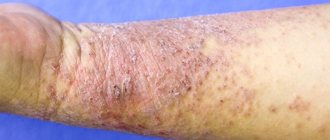
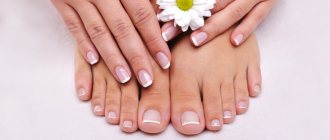

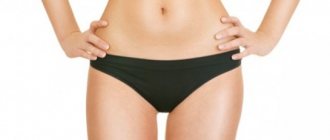
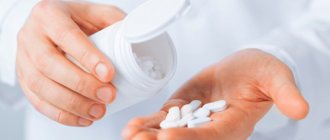
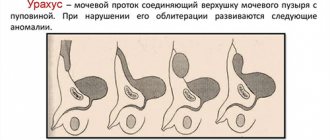
![Rice. 2. Relationship between dose of diclofenac (D), naproxen (Nap) and etoricoxib (Eto) and effect size in osteoarthritis [3]](https://ms-pi.ru/wp-content/uploads/ris-2-zavisimost-mezhdu-dozoj-diklofenaka-d-naproksena-nap-i-330x140.jpg)

